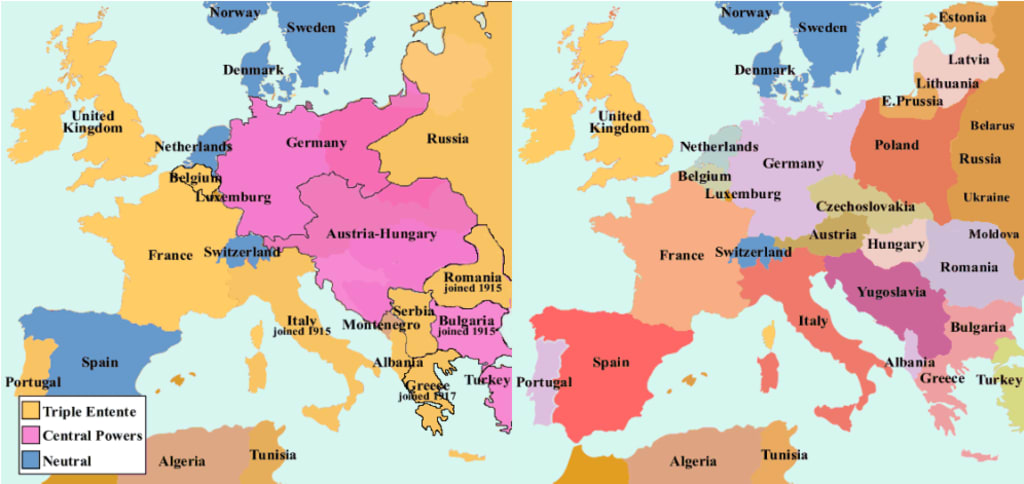
Once upon a time, in the early 20th century, a storm of conflict brewed across the globe, ultimately leading to one of the most devastating wars in history - World War I.
The year was 1914, and tensions were mounting among the major powers of Europe. A series of alliances and rivalries had created a delicate balance that was about to be shattered. The spark that ignited the flames of war came on June 28, 1914, when Archduke Franz Ferdinand, heir to the Austro-Hungarian Empire, was assassinated in Sarajevo, Bosnia, by a young Serbian nationalist.
This tragic event set in motion a chain of events that spiraled out of control. Austria-Hungary, seeking retribution, issued an ultimatum to Serbia, demanding an investigation into the assassination and severe consequences for those involved. When Serbia failed to fully comply with the demands, Austria-Hungary declared war on Serbia on July 28, 1914.
The conflict quickly escalated as the alliance systems kicked into action. Austria-Hungary received support from its powerful ally, Germany. Russia, a Slavic nation sympathetic to Serbia, mobilized its forces to defend its ally. Germany, fearing a two-front war, launched a pre-emptive strike against Russia and declared war on France, which was bound to Russia by a treaty. The German army swiftly advanced through Belgium, violating its neutrality, in order to reach France quickly.
The dominoes continued to fall as Britain, obligated by a treaty to protect Belgium's neutrality, declared war on Germany. Soon, countries from around the world were drawn into the conflict, including Italy, Ottoman Empire, Japan, and eventually the United States.
What followed was years of brutal trench warfare, where soldiers fought in horrifying conditions, enduring heavy artillery bombardments, machine gun fire, and poisonous gas attacks. The frontlines stretched across Europe, from the muddy fields of Flanders in Belgium to the sun-baked plains of Gallipoli in the Ottoman Empire.
Technological advancements, such as tanks, airplanes, and submarines, were utilized on a large scale for the first time, forever changing the nature of warfare. However, these advancements only added to the scale of destruction and loss of life. Millions of soldiers and civilians perished during the war, and entire cities were reduced to rubble.
As the war raged on, it became clear that neither side could gain a decisive victory. The introduction of fresh troops from the United States in 1917 tipped the balance in favor of the Allied powers, which included Britain, France, Russia, and later the United States. Gradually, the Central Powers, led by Germany, began to crumble.
In November 1918, an armistice was signed, effectively ending the fighting. The world stood in shock at the devastating toll of the war. Empires had fallen, borders had shifted, and countless lives were forever changed. The Paris Peace Conference in 1919 attempted to bring stability to the post-war world, resulting in the Treaty of Versailles, which imposed harsh conditions on Germany and its allies, fueling resentment and setting the stage for future conflicts.
World War I was a turning point in history, marking the end of the old world order and the beginning of a new era. It laid the groundwork for future global conflicts and shaped the geopolitical landscape of the 20th century. Its impact can still be felt today, serving as a reminder of the horrors of war and the importance of seeking peaceful resolutions to conflicts.
In conclusion, World War I was a cataclysmic event that engulfed the world in violence and destruction. It was a war fought on an unprecedented scale, involving nations from around the globe. The war arose from a complex web of alliances, rivalries, and tensions among major powers.
The conflict unleashed devastating technological advancements that forever changed the nature of warfare, but also resulted in immense human suffering. The trenches became synonymous with the horrors of war, as soldiers endured unimaginable hardships and faced death on a daily basis.
After years of relentless fighting, the war reached a stalemate, with neither side able to achieve a decisive victory. The entry of the United States into the conflict tipped the scales in favor of the Allied powers, leading to the eventual collapse of the Central Powers.
The aftermath of World War I was marked by significant geopolitical shifts and the redrawing of borders. The Paris Peace Conference and the Treaty of Versailles attempted to establish a new world order, but the harsh terms imposed on Germany sowed the seeds of future conflicts, ultimately leading to World War II.
World War I left a profound and lasting impact on society, politics, and international relations. It shattered illusions of glory and heroism, revealing the true horrors of modern warfare. It also brought about advancements in technology and medicine, as well as societal changes, such as the rise of women's suffrage movements and the reevaluation of colonialism.
Above all, World War I stands as a stark reminder of the importance of diplomacy, dialogue, and peaceful resolutions to conflicts. Its legacy serves as a cautionary tale, urging nations to work together to prevent future wars and promote global stability.
Ultimately, World War I was a tragic chapter in human history, with its effects reverberating throughout the 20th century and beyond. It remains a solemn reminder of the cost of war and the imperative to strive for peace.





Comments
There are no comments for this story
Be the first to respond and start the conversation.